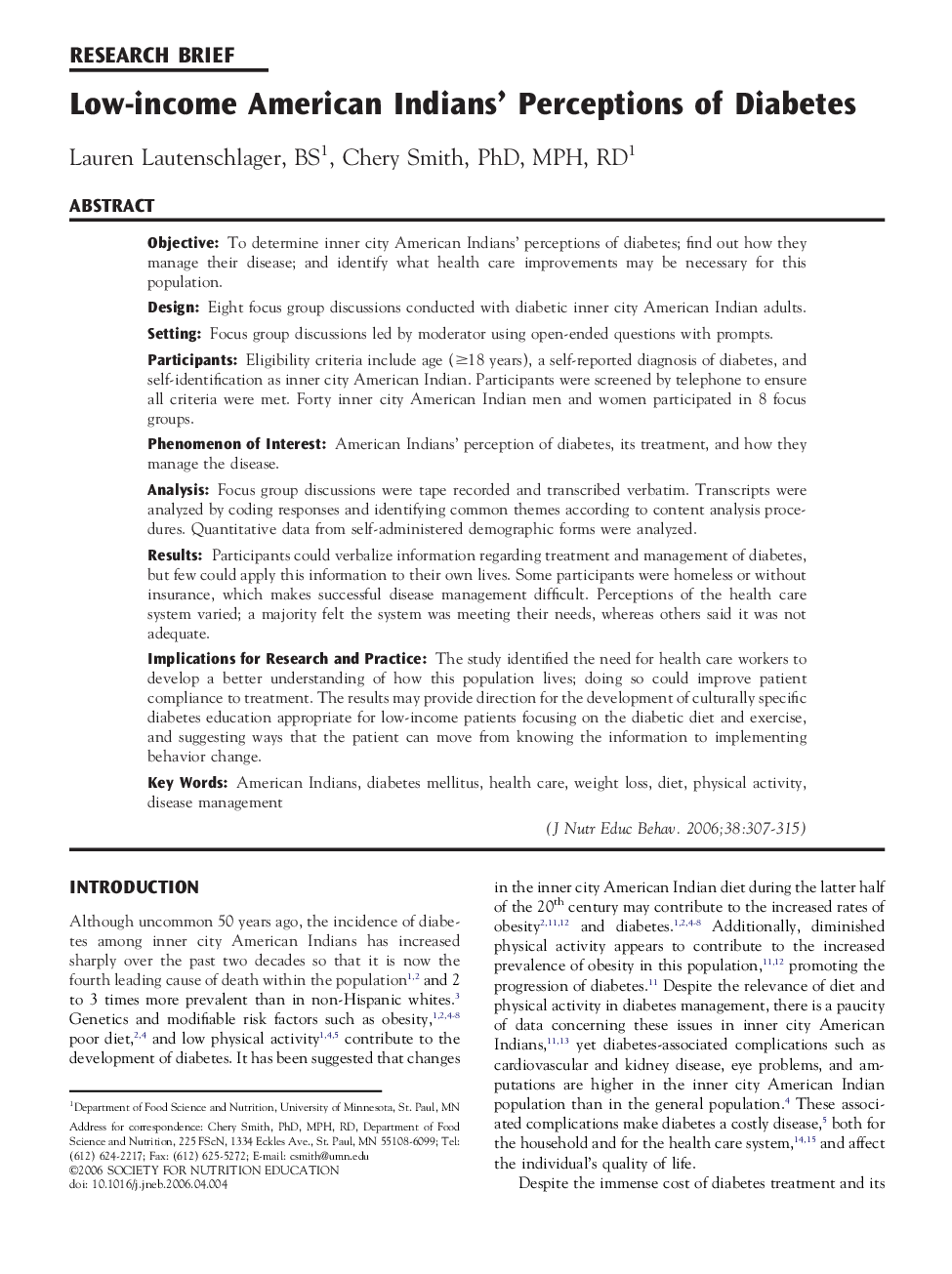| Article ID | Journal | Published Year | Pages | File Type |
|---|---|---|---|---|
| 363383 | Journal of Nutrition Education and Behavior | 2006 | 9 Pages |
ObjectiveTo determine inner city American Indians’ perceptions of diabetes; find out how they manage their disease; and identify what health care improvements may be necessary for this population.DesignEight focus group discussions conducted with diabetic inner city American Indian adults.SettingFocus group discussions led by moderator using open-ended questions with prompts.ParticipantsEligibility criteria include age (≥18 years), a self-reported diagnosis of diabetes, and self-identification as inner city American Indian. Participants were screened by telephone to ensure all criteria were met. Forty inner city American Indian men and women participated in 8 focus groups.Phenomenon of InterestAmerican Indians’ perception of diabetes, its treatment, and how they manage the disease.AnalysisFocus group discussions were tape recorded and transcribed verbatim. Transcripts were analyzed by coding responses and identifying common themes according to content analysis procedures. Quantitative data from self-administered demographic forms were analyzed.ResultsParticipants could verbalize information regarding treatment and management of diabetes, but few could apply this information to their own lives. Some participants were homeless or without insurance, which makes successful disease management difficult. Perceptions of the health care system varied; a majority felt the system was meeting their needs, whereas others said it was not adequate.Implications for Research and PracticeThe study identified the need for health care workers to develop a better understanding of how this population lives; doing so could improve patient compliance to treatment. The results may provide direction for the development of culturally specific diabetes education appropriate for low-income patients focusing on the diabetic diet and exercise, and suggesting ways that the patient can move from knowing the information to implementing behavior change.
